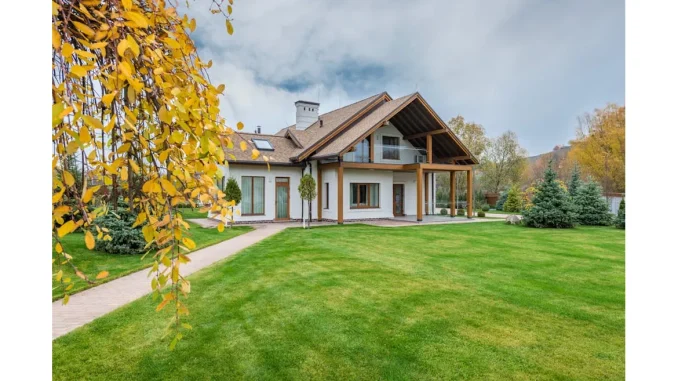
Passivhaus design has emerged as a paragon of sustainable building methodologies, with a pronounced focus on energy efficiency and environmental stewardship. This innovative approach to architecture and construction has garnered significant interest and debate among architects, builders, and environmental advocates. Through interviews with Certified Passivhaus Designers, we delve into the myriad challenges, benefits, and pivotal considerations that accompany the adoption of Passivhaus principles. The insights gleaned underscore the transformative potential of Passivhaus, illuminating its pivotal role in fostering a more sustainable future in building design.
One of the foremost challenges that designers encounter when embarking on Passivhaus projects is the complex process of cost assessment. The volatility of construction material prices, coupled with the meticulous attention to detail required to achieve high-performance standards, can substantially influence overall project expenses. For both designers and clients, it is imperative to conduct a thorough evaluation of budget considerations. This meticulous planning ensures that the ambitious energy efficiency goals of Passivhaus can be realised without jeopardising financial viability.
At the heart of any successful Passivhaus project lies the rigorous certification process. This certification acts as a hallmark of quality and performance, ensuring that buildings adhere to stringent criteria for energy efficiency and comfort. By conforming to these rigorous standards, Passivhaus buildings achieve levels of energy efficiency that distinguish them from conventional construction methods. The certification not only instils confidence in clients and occupants regarding the building’s performance but also establishes a benchmark for excellence in sustainable building practices.
The selection of contract type is another crucial consideration in Passivhaus projects. Whether opting for a traditional contract or a design-build approach, the choice can significantly impact the project’s success. Different contract types cater to varying project requirements, and selecting the appropriate one can streamline the design and construction process. Alongside contract considerations, addressing the potential for overheating in Passivhaus buildings is vital. Passive design solutions, such as external shading, cross ventilation, and stack ventilation, play a critical role in maintaining comfortable indoor temperatures and mitigating overheating risks.
While Passivhaus certification primarily emphasises operational energy efficiency, it also indirectly contributes to reducing embodied carbon through the use of high-performing materials and innovative technologies. Embodied carbon encompasses the carbon emissions associated with the production and transportation of building materials. By prioritising sustainability and long-term performance, Passivhaus design aims to create buildings that not only perform efficiently over time but also have a reduced environmental impact from their inception. Tools such as the AECB PHribbon further highlight the importance of minimising carbon emissions in building design and construction, advocating for a more sustainable approach to architecture.
The concept of dual certifications, such as Passivhaus and BREEAM (Building Research Establishment Environmental Assessment Method), is gaining traction. These certifications underscore both energy efficiency and healthy living conditions, creating buildings that prioritise environmental impact and occupant well-being. By aligning Passivhaus principles with broader sustainability standards like BREEAM, designers can develop buildings that offer a holistic approach to sustainability. This trend signals a future where Passivhaus standards could become the industry norm, setting a new benchmark for energy-efficient and sustainable building practices on a global scale.
Experience and expertise play a pivotal role in enhancing the cost-effectiveness and performance of Passivhaus projects. Engaging seasoned designers and contractors well-versed in Passivhaus principles can significantly reduce costs and ensure the project’s success. Moreover, involving residents in the use of new technologies and sustainable features in their Passivhaus homes is an ongoing process. Education and awareness are key to empowering residents, ensuring they can fully embrace and optimise the sustainable features of their homes. This holistic approach guarantees the long-term efficiency and success of Passivhaus buildings.
As the industry continues to evolve, the early involvement of a Passivhaus Designer becomes increasingly critical. By engaging these experts from the outset, projects can avert additional costs and complications down the line. However, the widespread adoption of Passivhaus principles faces challenges, particularly the need for a broader skill set among builders and designers. Increased training and education in sustainable building practices are essential to meet the growing demand for Passivhaus buildings and deliver them at scale.
Passivhaus principles have the potential to revolutionise conventional building methods, focusing on reducing waste, cutting carbon emissions, and promoting energy efficiency. Ongoing research into remote environmental monitoring for Passivhaus buildings provides valuable insights into building performance and energy usage. Such advancements pave the way for further innovations in sustainable architecture, ensuring that Passivhaus buildings continue to lead the way in energy-efficient design.
In essence, the insights shared by Certified Passivhaus Designers provide a comprehensive understanding of the complexities and benefits of designing and constructing Passivhaus buildings. By embracing Passivhaus principles, engaging experienced professionals, and prioritising sustainable design decisions, the construction industry can advance towards a more energy-efficient and environmentally conscious future. Passivhaus design stands as a beacon of sustainable architecture, shaping the landscape of sustainable building practices and setting new standards for excellence in the field of architecture and design.


Be the first to comment